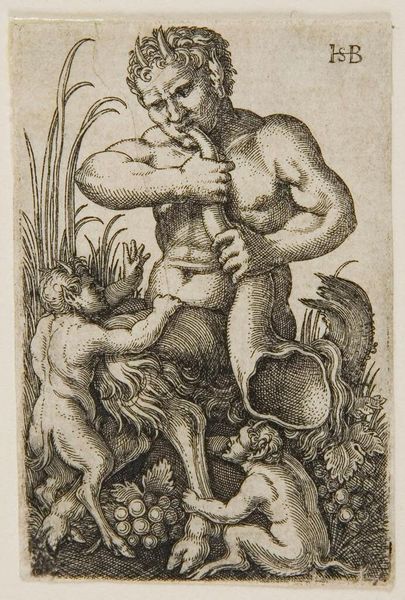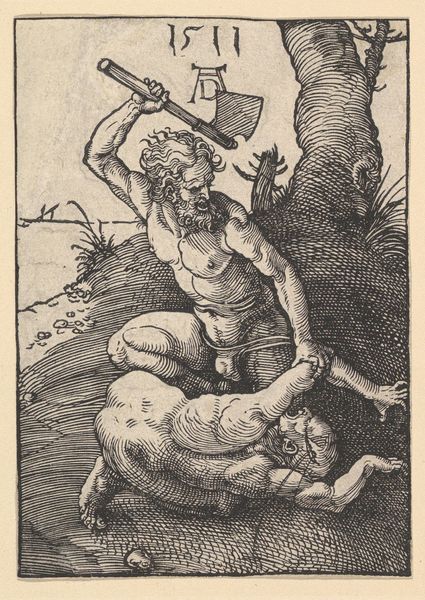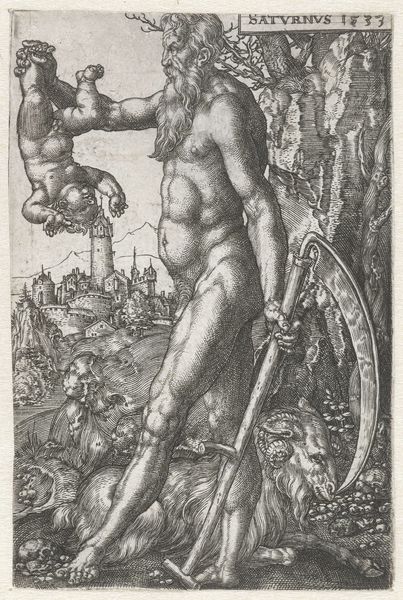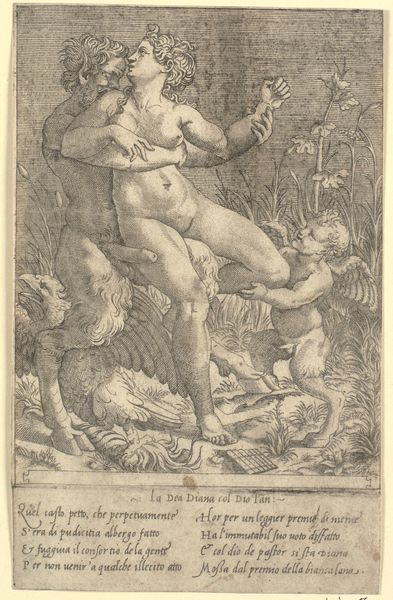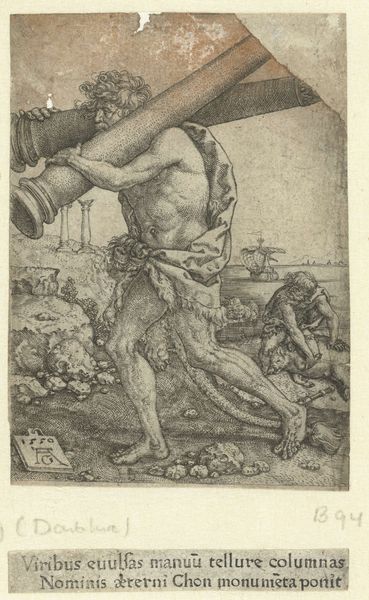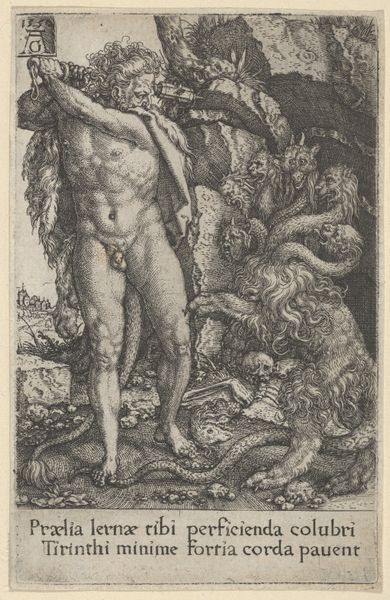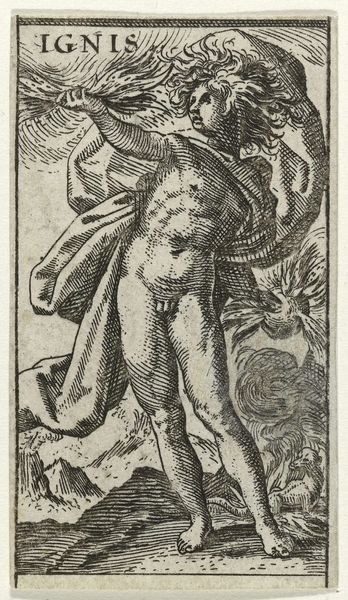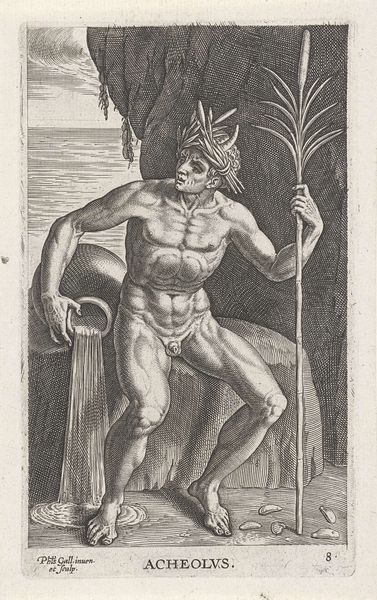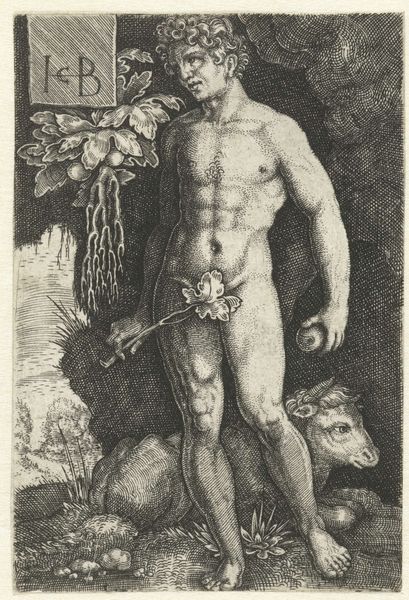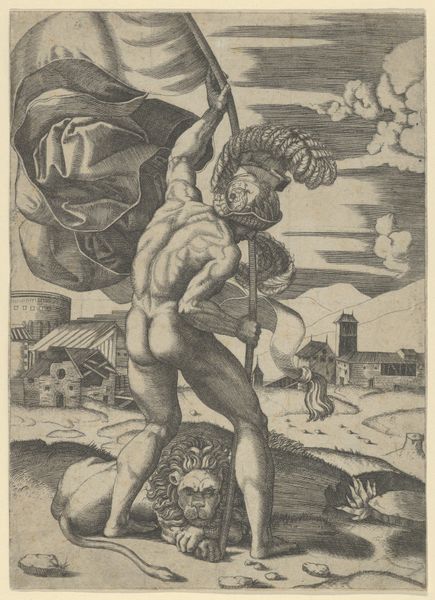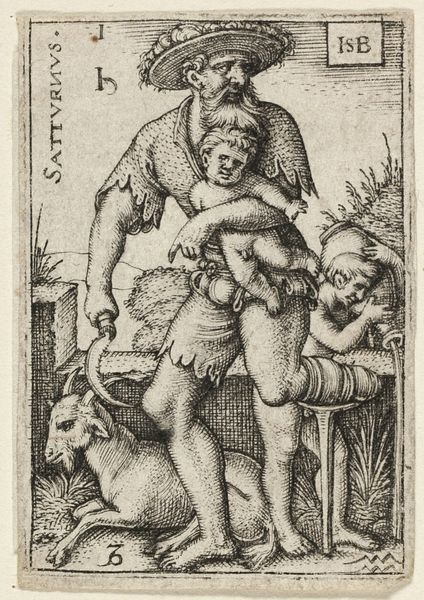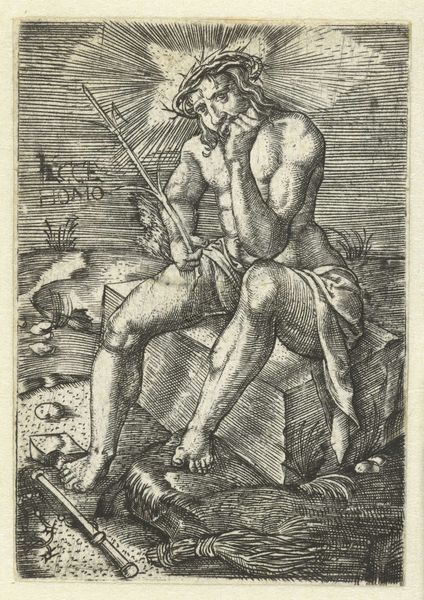
print, engraving
#
allegory
# print
#
mannerism
#
figuration
#
northern-renaissance
#
engraving
Dimensions: height 53 mm, width 34 mm
Copyright: Rijks Museum: Open Domain
Sebald Beham made this tiny, intricate print, “Satyr blazend op een hoorn,” sometime between 1500 and 1550 using the intaglio process of engraving. Engraving is a skilled, labor-intensive process. The artist carefully incises lines into a metal plate, often copper, using a tool called a burin. The depth and density of these lines determine the darkness of the printed image, which, in this case, creates dramatic tonal contrasts. Look closely at the satyr's muscular form and the lively details of the surrounding flora and fauna. These lines wouldn't be possible without complete mastery of the engraver’s tools. The production of prints like these was central to the art market of Beham's time; they democratized imagery, making it available to a wider audience. By understanding the time and skill involved in creating this small work, we can appreciate the print not just as a picture, but as a testament to the creative labor that made it possible.
Comments
No comments
Be the first to comment and join the conversation on the ultimate creative platform.
